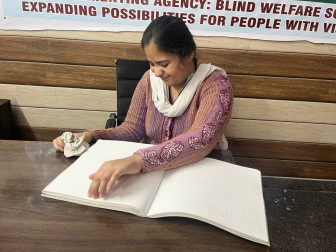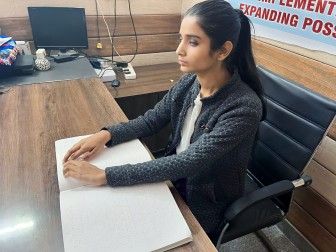Access to quality healthcare is a fundamental right, yet many visually impaired individuals face significant barriers in navigating medical systems. These challenges can lead to delays in diagnosis, inadequate treatment, and a diminished quality of life. Understanding and addressing these obstacles is crucial to ensuring that visually impaired patients receive the care they deserve.
Physical Barriers: Many healthcare facilities are not fully equipped to accommodate visually impaired patients. Inadequate signage, poor lighting, and a lack of tactile information can make it difficult for individuals to navigate these spaces independently. This can lead to confusion, frustration, and a reluctance to seek care.
Communication Barriers: Effective communication is essential in healthcare, yet visually impaired patients often encounter difficulties in understanding medical information. Standard print materials, such as brochures and consent forms, may not be accessible. Additionally, healthcare providers may lack training in communicating effectively with patients who have visual impairments, leading to misunderstandings and inadequate informed consent.
Transportation Issues: Transportation can be a significant hurdle for visually impaired individuals trying to access healthcare services. Limited public transportation options and a lack of accessible ride-sharing services can restrict patients' ability to attend appointments, particularly in rural or underserved areas.
Insurance and Financial Barriers: Financial constraints can further exacerbate healthcare accessibility challenges. Visually impaired individuals may face higher medical expenses due to the need for specialized services or equipment. Limited insurance coverage can deter patients from seeking necessary care, leading to poorer health outcomes.
Lack of Awareness and Advocacy: Many healthcare providers may not fully understand the specific needs of visually impaired patients. This lack of awareness can result in inadequate accommodations, reduced empathy, and a general misunderstanding of the challenges these individuals face. Moreover, advocacy efforts to promote healthcare accessibility for visually impaired individuals are often limited.
Enhancing Physical Accessibility: Healthcare facilities should prioritize creating an environment that is welcoming and accessible to visually impaired patients. This includes implementing clear signage in large print and Braille, improving lighting, and ensuring that staff are trained to assist individuals in navigating the facility.
Improving Communication: Healthcare providers should adopt inclusive communication practices. This includes offering patient education materials in accessible formats, such as audio or Braille, and utilizing clear, concise language when discussing medical information. Training healthcare staff on effective communication techniques with visually impaired patients is essential.
Transportation Solutions: Developing partnerships with local transportation services to provide accessible options for visually impaired individuals can help bridge the gap in healthcare access. Community organizations can also play a role in facilitating transportation services for patients in need.
Advocating for Insurance Coverage: Advocating for comprehensive insurance coverage for vision-related healthcare services can alleviate some financial burdens faced by visually impaired patients. Engaging with policymakers to promote inclusive policies that address the specific needs of this community is crucial.
Raising Awareness and Promoting Advocacy: Increasing awareness among healthcare providers about the unique challenges faced by visually impaired patients can foster a more compassionate and understanding approach to care. Advocacy groups can work to promote policy changes that enhance healthcare accessibility and provide resources for visually impaired individuals.
Improving healthcare accessibility for visually impaired patients requires a concerted effort from healthcare providers, policymakers, and the community. By addressing the physical, communication, and transportation barriers, we can create a more inclusive healthcare system that respects the dignity and needs of visually impaired individuals.
Empowering visually impaired patients to advocate for themselves and promoting awareness within the healthcare community are vital steps toward achieving equitable access to medical care. Every individual deserves the right to quality healthcare, and by working together, we can ensure that visually impaired individuals are no longer sidelined in their pursuit of health and wellness.
By contributing to our feature donation campaigns, you are not just supporting us,
you are fostering independence, education, and accessibility for the people with blindness.
We are providing free shelter, food and educational support to the abandoned visually impaired girls residing at BWS.
₹1146562
raised of ₹2000000 Goal
57%
1 Days left
573 Supporters
Maa and Papa weren’t the happiest when I was born. They thought I was a burden to them.
₹768833
raised of ₹2000000 Goal
38%
1 Days left
589 Supporters
The Walking Canes have proved a useful tool to millions of blind people in navigating their environments with confidence and ease.
At our organization, we provide a nurturing environment for visually impaired girls, helping them lead fulfilling lives despite their challenges.
The following stories highlight the transformative journey of these remarkable individuals within our organization.

Hailing from Delhi, Sneha came to Blind Welfare Society in July 2023.
.jpeg)
Hailing from a small village of Gwalior district, Madhya Pradesh, Archana came to Blind Welfare Society in July 2023

Chhavi’s journey is a testament to the transformative power of education and the invaluable support provided by the Blind Welfare Society.